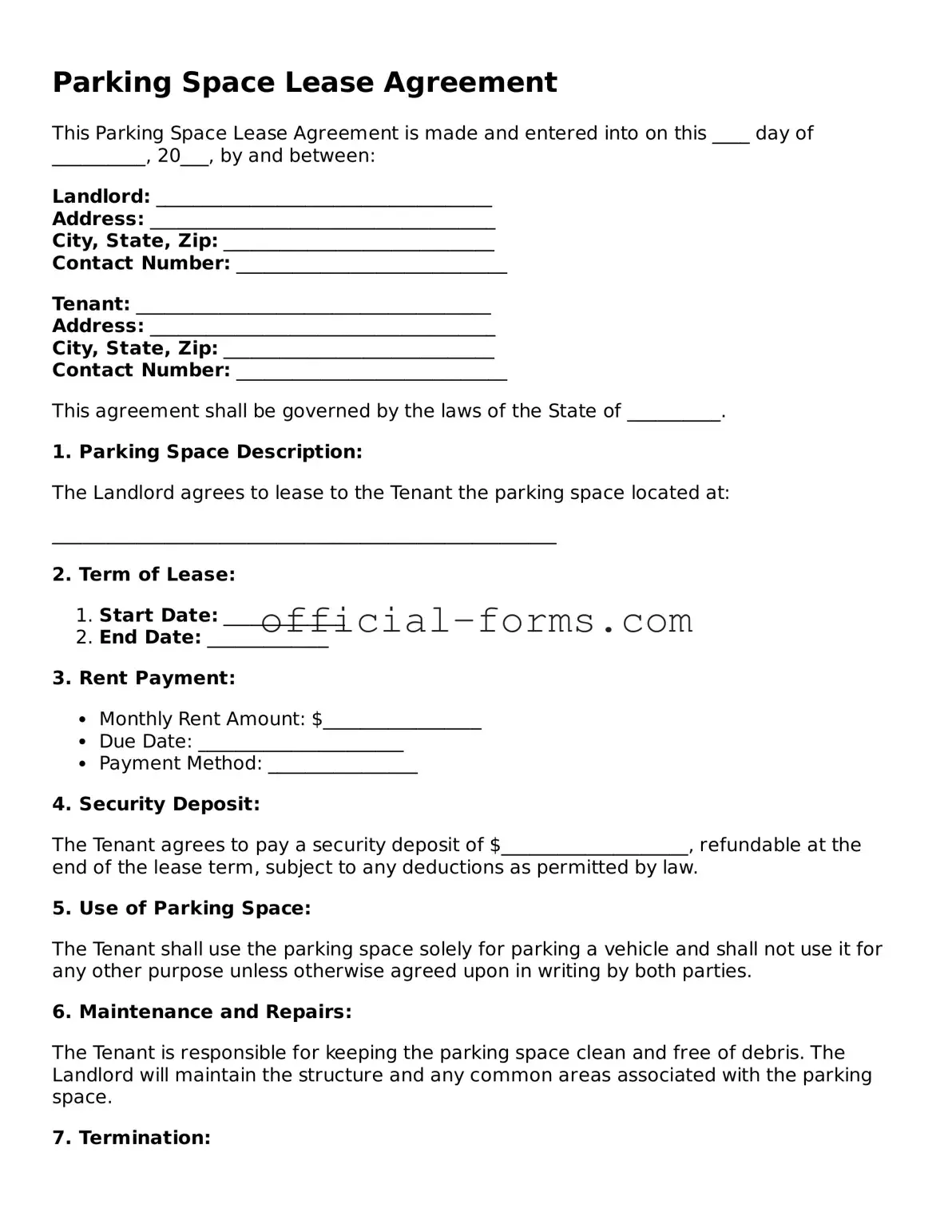Filling out a Parking Space Lease Agreement can seem straightforward, but many individuals inadvertently make mistakes that could lead to complications down the line. One common error is failing to include accurate personal information. It’s crucial to ensure that names, addresses, and contact details are correct. A simple typo can create confusion and may hinder communication between the parties involved.
Another frequent mistake is neglecting to specify the duration of the lease. Without a clear start and end date, the agreement can become ambiguous. This lack of clarity might lead to misunderstandings regarding when the lease begins and when it ends, potentially resulting in disputes over parking rights.
Some individuals overlook the importance of detailing the payment terms. It’s essential to specify how much rent is due, the frequency of payments, and acceptable payment methods. Failing to outline these details can lead to disagreements about when payments are expected and how they should be made.
Moreover, many people forget to clarify the terms regarding maintenance and repairs. It is important to state who is responsible for maintaining the parking space. If this aspect is not addressed, one party may assume they are responsible for repairs, leading to frustration and conflict.
Additionally, individuals often skip over the section that outlines the rules and regulations governing the use of the parking space. This section is vital for preventing misunderstandings about what is allowed and what is not. Clearly defining these rules can help ensure that both parties have the same expectations.
Another common oversight is not including a clause regarding termination of the lease. It is wise to outline how either party can terminate the agreement, including any notice periods required. Without this clause, one party may feel trapped in the agreement, leading to resentment and potential legal disputes.
Lastly, many individuals fail to read the entire agreement thoroughly before signing. It is essential to understand every aspect of the lease, as signing without comprehension can lead to unintentional acceptance of unfavorable terms. Taking the time to review the document can prevent future issues and ensure that all parties are on the same page.
